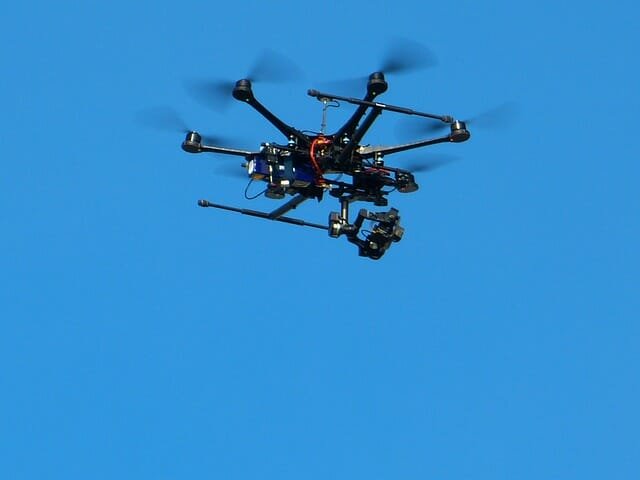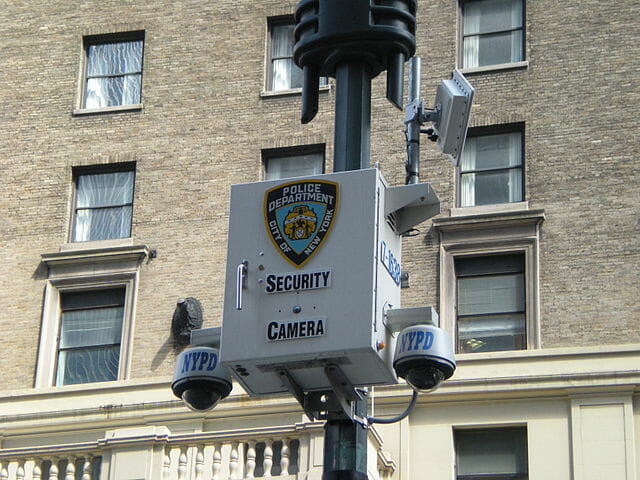Late City Council Meeting Forces Second Delay on Culver City Police Surveillance Requests
“Don’t do it.”
Speaker Mariella Saba’s mandate to the Culver City Council penetrated the quiet council chambers at about 1 AM February 13th. Part appeal, part admonishment, the words encapsulated most – but not all – of the sentiment being shared that early morning. And it seemed to work.
For the second time in five weeks, the council deferred decisions to expand the Culver City Police Department’s (CCPD) surveillance capabilities, citing the need for greater public conversation prior to approval.
In early January, the police department requested funds for two types of surveillance technology. The first request, to the tune of about half a million dollars, would bring fixed automatic license plate reader (ALPR) cameras to intersections throughout Culver City. These cameras catalogue every passing license plate and offload the images to a private server. The geotagged and timestamped photos are maintained by Vigilant Solutions, a converted computer vision company that now offers big data-sharing and analytic tools on top of the camera hardware.
 Drones like to this may soon be quietly flying the skies of Culver City. All police drones must be clearly marked as such per the Culver City Police Department’s written policy.
Drones like to this may soon be quietly flying the skies of Culver City. All police drones must be clearly marked as such per the Culver City Police Department’s written policy.CCPD’s second ask entailed about $70,000 for 8 drones – which range in cost from $700 to $25,000 – equipped with cameras.
As I reported in January, the council first tabled this item in the wee hours of January 9th, instructing the police to draft a written policy on the use of these technologies before the council would vote on them. Councilmember Megan Sahli-Wells specifically asked the policy be published at least 15 days before it returned to the council. But according to the city’s staff report on the item, the only public notification came five days in advance of the meeting, buried in the council’s February 12th meeting agenda.
Nearly 5 hours into that Feb 12th meeting, at around 12:30 AM, the drone purchase request reached the floor – only because Mayor Jeffrey Cooper pushed other agenda items out of the way.
Instead of examining the policy in detail here, I’ll devote a separate article to breaking down both the drone and ALPR surveillance policies. But even a brief reading of the CCPD’s work raises more questions than answers.
As far as permissible use goes, Sims posed a laundry list of circumstances – everything from crowd control (perhaps “some type of civil unrest” he offered) to illegal drug investigations to “supporting criminal investigations.” The list is expansive, begging the question as to what, if anything, the drones won’t be used for.
Speaker Hamid Khan, warning of mission creep, noted the policy permits usage in most types of routine police work, despite verbal assurances that drone deployment would be “incident-driven” (the written policy makes no such promise). Speaker Michelle Weiner remarked the list of use cases is prefaced with the words “including, but not limited to” – seemingly a blank check to allow use in whatever situation the CCPD might want now or in the future.
 The Culver City Police Department wants license plate reader cameras. Could security cameras, like those used by the NYPD, be next?
The Culver City Police Department wants license plate reader cameras. Could security cameras, like those used by the NYPD, be next?The written prohibitions are less extensive than the permissions, but equally loopholey. In one section, the use of “vision enhancement technology” like thermal imaging, is limited to places with no reasonable expectation of privacy – except “when exigent circumstances exist.”
What are the parameters for an exigent circumstance? What oversight will be instituted to prevent abuse of that clause?
Another restriction: “pilot officers are to utilize sound judgment and exercise discretion” to determine when “privacy may outweigh any legitimate law enforcement interest in the recording.”
What guidelines describe when privacy outweighs law enforcement interest? How do we know what constitutes sound judgment and discretion?
The council, wary of the late hour but averse to denying the request, decided narrowly to postpone voting on both surveillance items, instead repeating calls for more public conversation on the issue.
“I know there are more people interested in this item than are represented here tonight,” said Councilmember Sahli-Wells, referring to the fifteen or so in attendance. “I would feel more comfortable taking this step if I were confident that the community was fully involved in the process.”
Not every councilmember agreed, however. Mayor Jeffrey Cooper and Councilmember Goran Eriksson voiced their comfort with voting regardless of the timing.
“This is the fourth time we’ve done this,” said Mayor Cooper. “It wasn’t a secret that we were meeting tonight. I’m fully supportive of this tool to assist our police – I don’t fear it.”
The decision came down to Councilmember Jim Clarke, caught between Ms. Sahli-Wells and Vice Mayor Thomas Small on one side of the fence and Mr. Eriksson and Mr. Cooper on the other.
Mr. Clarke echoed sentiments about the late hour and described a decision based on pragmatism, but not a specific concern about the police drones.
“I’m not comfortable with the time we’re making this decision or the feeling it particularly gives,” he began. “Now we also have to deal with the license plate reader issue […] Let’s have that discussion and the discussion about drones at a regular time when people can be here.”
With the topic temporarily settled, the meeting adjourned just past 2 AM on February 12.
It marked the second time greater public outreach and community dialogue had been promised. In conversations with members of the council after the meeting, it seems the responsibility for following through on those promises fell with the CCPD, who failed to provide the minimal steps requested in January.
Nobody held the CCPD to account for this failure. No councilmember confirmed or even directly asked if the department had performed the outreach they promised in January.
The oversight hardly foreshadows thorough accountability, communication, and transparency if these technologies do end up in the police’s hands. With no specific plan on how to proceed specified at this meeting, Culver City awaits notice of the next – perhaps final – conversation on these proposals.
Hey Steemites, I believe it's essential to pay attention to what your local government is doing with your money. That's why I create local journalism to cover the topics important to me and hopefully my neighbors. Support with an upvote, comment, and follow!
Happy Steemin.
-- WSz
Originally published on warrensz.me on 19 Feb 2018
Thanks for sharing @warrensz, drones right by LAX, that's a brilliant idea Culver. We need as many as possible.
While we are at it, 2am council meetings? How many people showed up?
On a serious note, i'm looking forward to your review of the drone policy, seems like it could use a lot more scrutiny.
Thanks @liotap!
Amazingly there were about a dozen folks still there at around 2 AM -- most were part of the Stop LAPD Spying Coalition. Not residents of Culver City, but sadly if they hadn't shown I'm sure the item would have passed
Quite interesting and concerning on many fronts. I recently saw SMPD utilizing their drone for surveillance and support on a homeless naked man (on drugs) entering a home on my street. The use of the drone appeared more to document what SMPD was doing as opposed to assisting as SMPD waited 2 hours for 13 officers and 2 attack dogs to arrive before going into the home. I need to research what their cost and transparency is as to usage here in SM.
@armentor I didn't realize Santa Monica was using drones already. Unfortunately it's a tide that I believe will be difficult to stop. But with thoughtful and extensive limitations on use, hopefully the downsides can be (mostly) avoided.
I'd be interested to hear what you find about the SMPD drone program!
You got a 37.97% upvote from @sleeplesswhale courtesy of @warrensz!